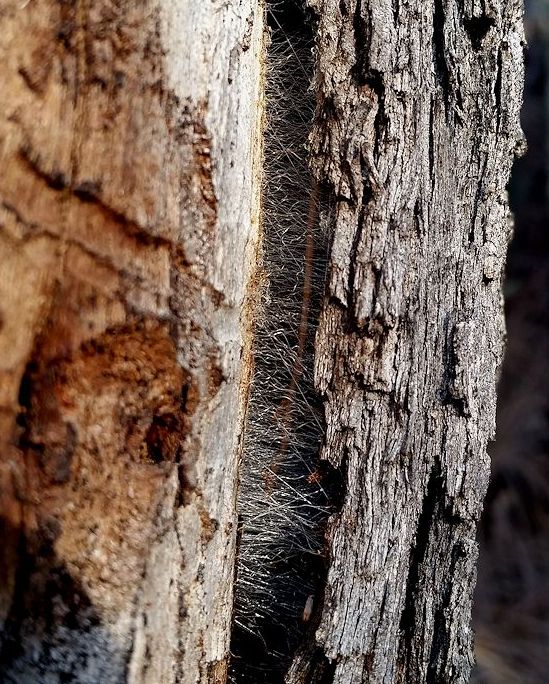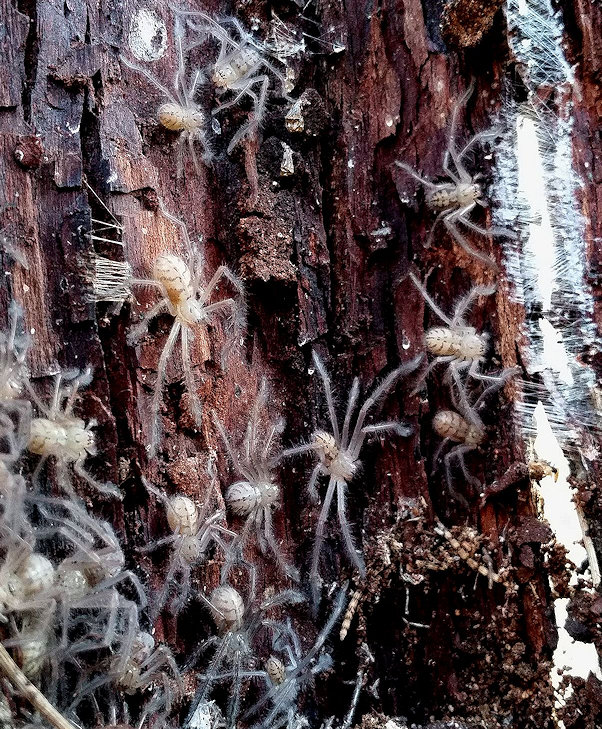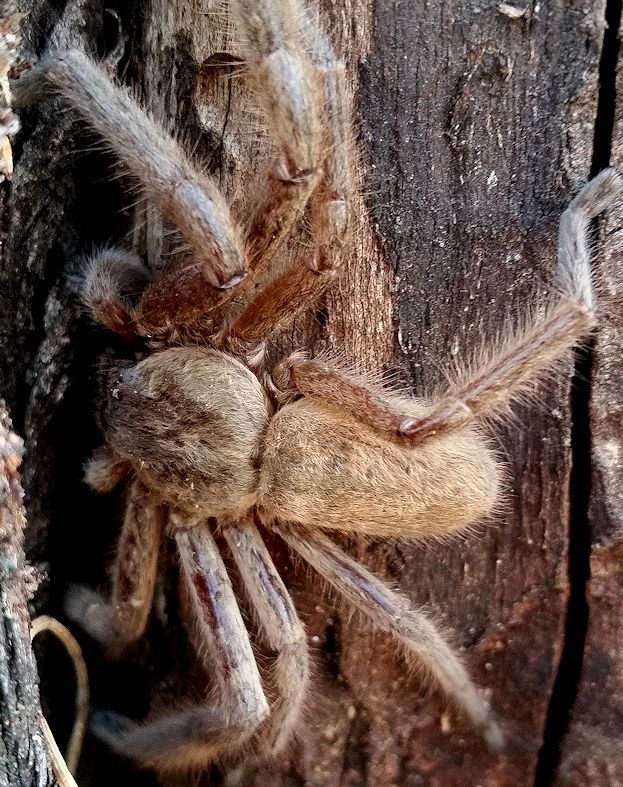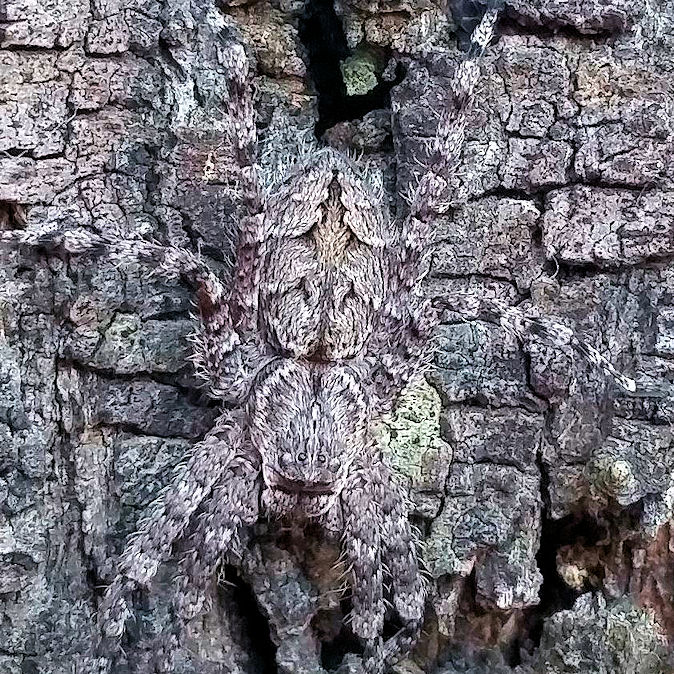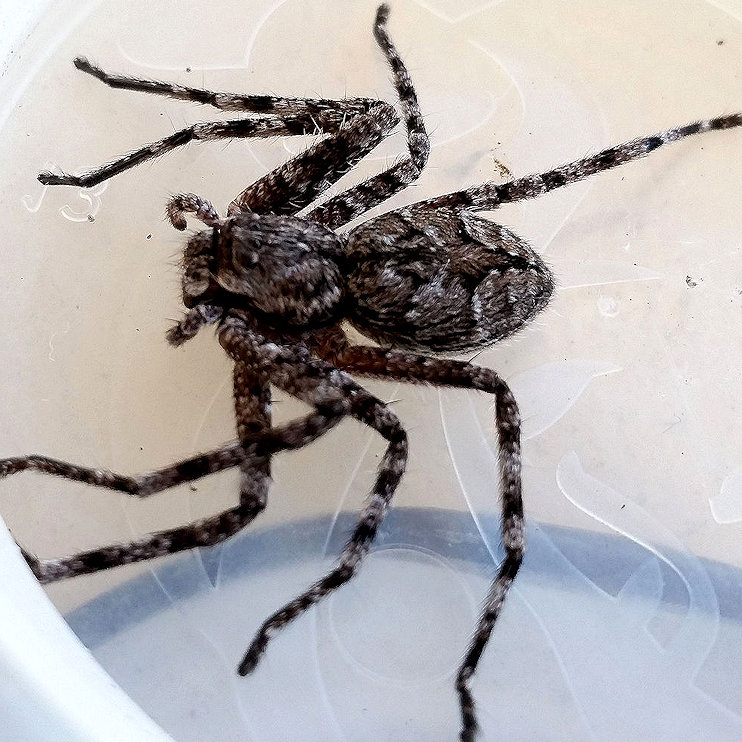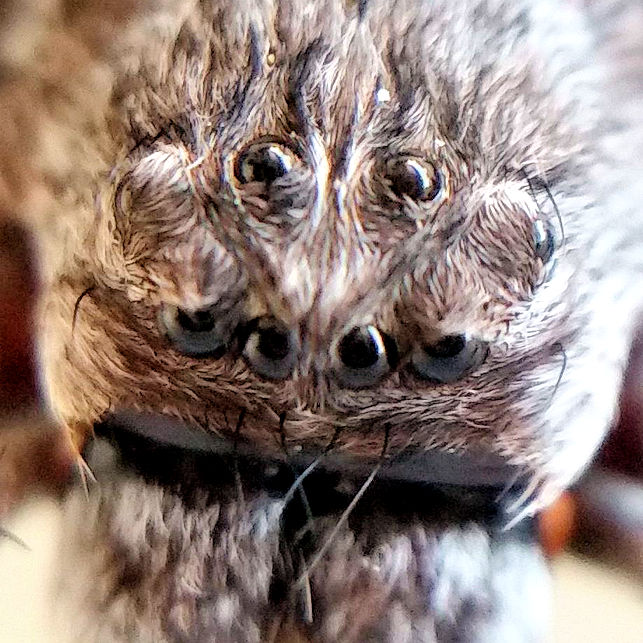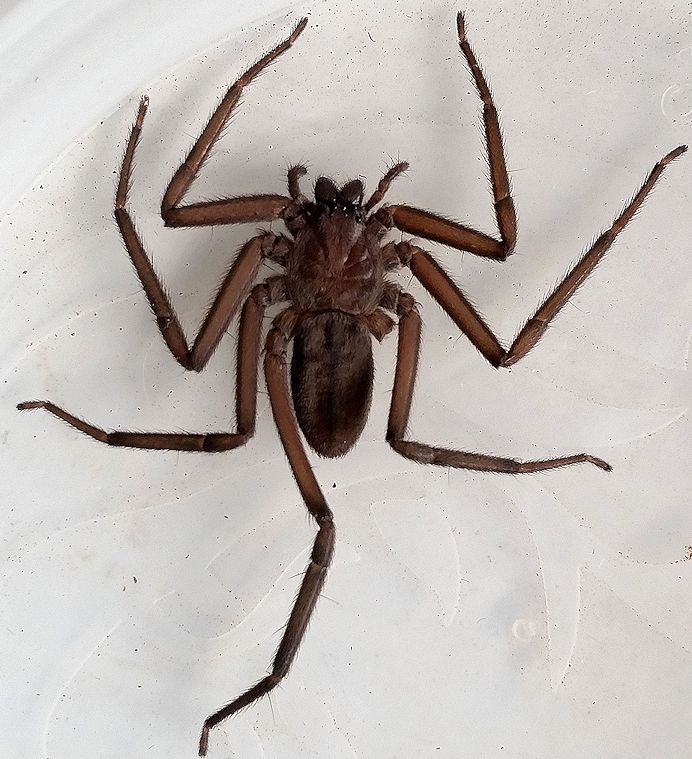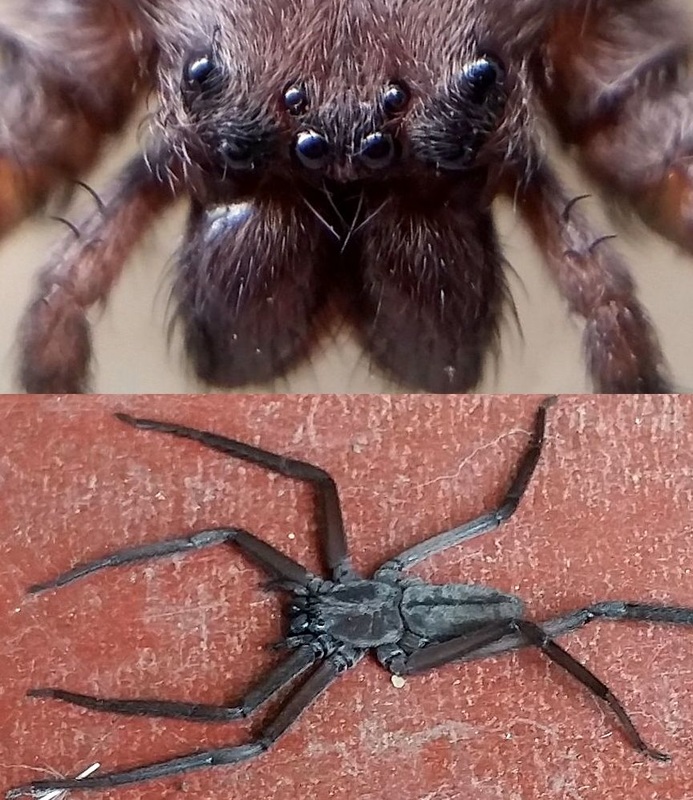These are my favourite spiders. Hairy, thrilling and relatively harmless. Huntsman spiders are in the Sparassidae family and are the large ‘hairy scary’ spiders that absolutely terrify people when they scuttle out from behind a curtain or the sun visor in the car. In reality, Australian huntsman spiders are a fascinating group with 13 genera and 94 described species. Many huntsman spiders live socially in large family groups with the mothers showing extraordinary maternal instinct. These large, hairy grey-brown spiders have flattened bodies and are found throughout Australia, preferring to live outside under the bark of trees or under rocks and logs on the ground. They are typically long-legged (females can reach sizes up to 15cm across the legs) with forward facing legs, and are known for their scuttling sideways gait. These sure-footed and agile spiders are nocturnal and sometimes seen indoors at night, hunting for insects. They have keen eyesight and are good hunters, running down and pouncing on their prey. Despite their size, they are not known to inflict a serious bite on humans.
Recently I noticed a webby suture in bark of a dead sheoak, and opened it to find a mass of baby huntsman spiders, and then the mum that was huge but quite docile as I edged her into position for a photo.

The wonderful huntsman species below that I found on a rock sheoak trunk was amazingly well camouflaged. As it was smaller, with a domed carapace, and the abdomen is not as flat, I suspect that it was a badge huntsman; Neosparassus Sp.
These have a conspicuous colour pattern un the underside of the abdomen, but I couldn't see the underside.
It seems be pre-squashed with an amazingly flat body that can fit in thin cracks, is very fast, and sometimes seen in cupboards and drawers.
I have found that a stay in the fridge (not freezer) is efficacious in encouraging insects to stay still, but of no use with these spiders that are adapted to hunting on cold nights.
It stayed still long enough for me snap the characteristic huntsman 2 rows of largish eyes. Some eyes seem to have hairs over or in them (weird).
